The latest on Canadian wildfires
Yellowknife’s 20,000 residents continue to evacuate as wildfires approach the city. Meanwhile, a state of emergency was declared early Friday in Kelowna, B.C., after wildfires jumped Okanagan Lake.
Emergency resources
- N.W.T. residents who need to evacuate can register with the territory. Those seeking more information about evacuations and wildfire updates can check online or call 1-844-259-1793. Smoke or fire can be reported to 1-877-698-3473.
- The Central Okanagan Emergency Operation Centre is asking evacuees to register through B.C.’s provincial portal. Residents can check an interactive map to check if their home is under evacuation order.
- West Kelowna and Central Okanagan residents can visit the B.C. government website for more information.
Find updates from our reporters below.
10:16 p.m. ET
NWT Premier evacuated Yellowknife on Friday
Northwest Territories Premier Caroline Cochrane said she evacuated Yellowknife, which is under threat from wildfires and smoke, late Friday evening. The leader disclosed her travel plans Saturday evening, during a press conference.
“I knew this day would come,” she said describing her ethical dilemma. “Do I stay until then end? Or do I leave?”
She said she didn’t want to take up a seat on a plane that could be filled by someone else. “So I made a decision that I would leave and so that anyone who needs a seat would have it on the planes going out.”
The premier arrived in Peace River, Alta., around 3:30 a.m. Saturday morning. She indicated she is aiming for Edmonton.
Officials in NWT on Wednesday ordered Yellowknife residents to leave by Friday at noon. Most people followed the instructions, leaving on the lone highway route south to Alberta or taking flights out. Most evacuation flights landed in Calgary.
Officials on Friday calculated there were roughly 2,600 people still in the capital, and about 1,000 of those were essential workers. Authorities are still encouraging residents to leave and evacuation flights to Winnipeg are still being arranged.
9:35 p.m. ET
Yellowknife hospital patients all evacuated, one died before move
Northwest Territories Health and Social Services Minister Julie Green said one patient at the Stanton Territorial Hospital died before being evacuated out of Yellowknife.
“This was an expected death, however I want to send my personal condolences to his family,” Ms. Green said during an update Saturday evening.
The minister said 39 patients were transferred out of the hospital Friday evening, making them among the last people to be evacuated from the city, despite the mandatory order coming down Wednesday. There are no patients remaining in the facility, she said.
“The hospital move was complex,” she said.
The patients evacuated Friday evening landed in British Columbia. Some may ultimately end up in Alberta, Ms. Green said. NWT will establish a phone line to support these patients’ families, she said.
8:37 p.m. ET
Vancouver issues air quality advisory and Trudeau promises aid to B.C.
The Metro Vancouver Regional District has issued an air quality advisory due to high concentrations of fine particulate matter from wildfire smoke.
It says the concentrations are expected to become elevated this evening and into tomorrow morning. It is expected to last until there is a change in the weather.
Prime Minister Justin Trudeau’s office also says he convened a meeting of the incident response group, made up of ministers and senior officials, on Saturday to discuss the importance of making additional resources available in B.C. and the Northwest Territories.
Trudeau also spoke with B.C. Premier David Eby about the wildfires in his province and promised to provide all necessary aid from the federal government.
– The Canadian Press
7:20 p.m. ET
BC Wildfire Service website, app under strain from traffic spike
The BC Wildfire Service IT abilities are under strain from a wave of global interest in the crisis unfolding across much of the western province.
BCWS, on social media, said it is seeing “record demand” from around the world on its app and desktop map products. The rush of interest from outside the province was “unexpected and is currently challenging our ability to consistently serve the evacuation alerts and orders map information,” BCWS said Saturday afternoon. “We understand this information is of critical importance to impacted communities at this time.”
The service did not ask users from outside B.C. to stop accessing the app and map pages, but directed the public to “alternative sources” that serve as backup sources of this information. BCWS said it is working to increase capacity to meet demand.
There are 380 wildfires burning in B.C., according to one of the government’s backup information sources.
6:02 p.m. ET
B.C. lifts evacuation alert for 1,000 dwellings
Officials rescinded the evacuation alert for nearly 1,000 dwellings in British Columbia’s southeast corner Saturday afternoon, bringing welcome news to one pocket of the fire-ravaged province.
The Regional District of East Kootenay lifted the evacuation alert for Panorama Mountain Resort and Toby Creek Road southwest of Lillian Lake. The shift affects 926 dwellings which were threatened by the Horsethief Creek wildfire.
RDEK spokesperson Loree Duczek said although the alert has been rescinded, residents need to remain prepared and aware.
”Conditions remain extremely dry and we all need to continue to stay prepared and aware as the fire danger rating remains high to extreme in our region,” she said in a statement.
The evacuation alert for Lake Enid, Bear Mountain, and Horsethief Creek areas remains in effect.
The Horsethief Creek fire covers about 3,920 hectares in size and started about seven kilometres north of Panorama and 10 kilometres west of Invermere, popular resort destinations in the Columbia Valley.
4:41 p.m. ET
B.C. orders fire-zone travel bans as evacuations soar over 30,000
British Columbia imposed bans on travel to wildfire zones on Saturday after evacuee numbers doubled to 30,000 or more
Premier David Eby put evacuee numbers at 35,000, although Emergency Management Minister Bowinn Ma said it was 30,000, with a further 36,000 on evacuation alert.
Evacuee numbers stood at 15,000 late Friday when Eby announced a provincewide state of emergency in response to the fires.
What’s the difference between an evacuation alert and an evacuation order in Canada?
Eby says the scale of the evacuations means the government is issuing an order to restrict travel to fire-affected areas to ensure accommodation is available for evacuees and emergency personnel.
Ma said the latest order, effective immediately until Sept. 4, restricted travel for anyone planning to stay in temporary accommodation in Kelowna, Kamloops, Oliver, Osoyoos, Penticton and Vernon.
Eby added that Solicitor General Mike Farnworth has also authorized emergency provisions to allow municipal RCMP resources to be deployed to evacuated areas and secure empty properties.
– The Canadian Press
4:34 p.m. ET
Yellowknife fires no longer expected to reach city this weekend
The fires threatening Yellowknife, the capital of the Northwest Territories, are no longer expected to reach the city this weekend, although officials cautioned evacuees against returning to the area.
Conditions favoured firefighters late in the week with weather stations near the Yellowknife, Ingraham Trail, and Dettah fires receiving small amounts of rain.
The Yellowknife blaze was 15 kilometres northwest of the municipal boundary Saturday afternoon, according to Mike Westwick, a fire information officer for NWT. It was 17 km away when officials ordered everyone out of the city Wednesday evening. At the time, the fire had the potential to lick the city’s edges by the weekend.
”It is now unlikely this fire would reach the outskirts of Yellowknife by the end of the weekend due to the slightly cooler-than-forecast conditions, help from rain, and successful firefighting efforts,” Mr. Westwick said in an update Saturday. “This is good news, but there are still tough, hot, dry, windy days ahead.”
3:23 p.m. ET
New water restrictions announced in West Kelowna
West Kelowna City is announcing a do not consume order for the Rose Valley water system and stage four water restrictions for the city as a whole.
This means that all outdoor use of water is now banned in West Kelowna. Agricultural users in the area are being encouraged to reduce consumption where they can, according to officials.
A number of homes in the Rose Valley neighborhood burned yesterday. As a result, water is freely flowing from those structures, draining local reservoirs.
“We need to conserve what little water remains in those reservoirs for firefighting purposes,” West Kelowna Fire Chief Jason Brolund said earlier today. “I need the water in those reservoirs. Please reduce your consumption.”
The RCMP also announced that multiple drones have been spotted in fire zones in Kelowna and West Kelowna.
“If a drone is in the area, you will ground a helicopter,” said Superintendent Kara Triance of the Kelowna detachment. “We need that airspace. It is illegal to fly a drone in an emergency where we are fighting fires. Please keep your drones out of the area so we can fight this fire.”
2:48 p.m. ET
B.C. officials provide update on Kelowna firefighting efforts
The fire chief of West Kelowna says an “army” of firefighters from across the province has managed to earn a reprieve for the city in the battle against a devastating wildfire.
But fire chief Jason Brolund says firefighters continue to face multiple structure fires that include streets full of burning houses.
Brolund told a Saturday morning briefing that the previous night’s battle got a boost from calmer and cooler conditions, but the fight continues to expand.
He says the “real successes” overnight came about due to 200 firefighters battling the destructive McDougall Creek wildfire.
Meanwhile, structural losses have been confirmed in the City of Kelowna by fire chief Travis Whiting, who says he can’t confirm numbers until after homeowners have been informed.
The Okanagan fires are at the epicentre of B.C.’s fight to control hundreds of blazes, which have triggered a provincewide state of emergency.
– The Canadian Press
2:32 p.m. ET
Yellowknife RCMP monitoring criminal activity as residents evacuate
RCMP in Yellowknife, the emptied capital of the Northwest Territories, assured thousands of wildfire evacuees that officers are still patrolling the streets and investigating any reports of criminal activity.
In a statement Saturday morning, the Mounties said they had arrested two suspects in connection with an alleged home invasion that took place Friday night. They said a 77-year-old alleged victim reported that a man and a woman forced their way into his apartment, allegedly stealing cash and a cellphone. Officers located and arrested two suspects - a 34-year-old man and 30-year-old woman – and charges were pending.
As of Friday evening, roughly 19,000 of Yellowknife’s 22,000 residents had been evacuated as fire and smoke threatened the community. Authorities believe there are roughly 2,600 people still in Yellowknife – about 1,000 of them are essential personnel – and are urging stragglers to register for flights out of town or to leave by highway immediately.
Yellowknife RCMP said they have also received several complaints from evacuees who are seeing suspicious people or movement on door-bell cameras or security cameras. “These calls are appreciated, and we will follow up on every one of them,” the statement said.
2:30 p.m. ET
Okanagan-Similkameen downgrades evacuation order
The Regional District of Okanagan-Similkameen has downgraded an evacuation order to an alert for some properties along the Similkameen River.
The area on the west side of Highway 3 includes Suncatchers RV Park, Riverside MH Park and Lucky R MH Park.
The district says 13 properties remain under an evacuation order and 195 are under an alert as a result of the Crater Creek Wildfire.
– The Canadian Press
2:00 p.m. ET
Crews continue to fight Lake Okanagan wildfires overnight, early Saturday
A man wearing a face mask rides a bicycle on the Waterfront Promenade as smoke from wildfires hangs low in the Lake Okanagan city of Kelowna, British Columbia, Canada August 19, 2023.CHRIS HELGREN/Reuters
The wildfires burning on both sides of Lake Okanagan continued to challenge crews overnight Friday and early Saturday. Helicopters continued bucketing water on fires in West Kelowna even after the sun set. And firefighters were called out multiple times throughout the night to put out new spot fires across Kelowna and West Kelowna.
The fire that began near Kelowna’s Clifton Road Thursday night — possibly after jumping Lake Okanagan from West Kelowna — spread east, prompting the evacuation of homes in the Glenmore Highlands area.
Friday afternoon, the fire spread to the Kelowna landfill, igniting parts of the dump, forcing its closure and prompting evacuations of the local UBC campus and Kelowna’s Quail Ridge neighbourhood.
There is good news, however. The strong winds that had been driving fire behaviour on Thursday and Friday seem to be dying down and fire behaviour appears to be calming. Temperatures, though they will remain hot, won’t approach the blistering heat of the last several weeks. Air quality, however, is going from bad to worse, as the smoke settles over the region.
1:55 p.m. ET
B.C. officials to give updates on wildfires
Two press conferences have been scheduled to provide updates about the wildfires that are threatening West Kelowna and Kelowna.
The Central Okanagan Emergency Operations Centre says there will be an “operational update” at 11 a.m. PT (2 p.m. ET) Saturday with representatives from BC Wildfire Service, RCMP and provincial emergency support services.
The Regional District of Central Okanagan has scheduled a briefing for noon (3 p.m. ET) which will include local mayors and the chief of the Westbank First Nation.
– The Canadian Press
1:34 p.m. ET
Unruly winds shift wildfire directions in West Kelowna after multiple evacuations
Officials have not said how many homes and businesses have been lost in West Kelowna. But anyone with eyes can see the losses are profound.
Heading west out of Kelowna across the Bill Bennett Bridge that links the city with West Kelowna and the Westbank First Nation, several homes can be seen burning above Westside Road, near Highway 97.
Overnight Thursday, the McDougall Creek Wildfire levelled many of the homes in Traders Cove and on Bear Creek Road, including the historic Lake Okanagan Resort, a hotel and condo development overlooking the lake.
What is less clear is the extent of damage at the fire’s western flank, in West Kelowna’s Rose Valley and Shannon Lake neighbourhoods.
On Thursday and Friday morning, strong winds had been pushing the fire north, northeast and downslope toward Lake Okanagan. Mid-afternoon Friday, however, the winds shifted. The tail of the fire suddenly became its head, pushing the flames back towards those neighbourhoods just north of the city’s downtown.
Satellite data shows that much of the overnight burn occurred in those areas, at the fire’s southern and western flanks, though officials have yet to confirm details of last night’s damage.
Multiple evacuations were ordered yesterday afternoon and evening after the winds shifted.
At this point, much of West Kelowna has been evacuated. Only residents in a handful of neighbourhoods south of Highway 97 are still allowed to remain in their homes.
1:20 p.m. ET
B.C. woman loses home, belongings after fleeing from West Kelowna wildfire
Three years ago, Maria Hart bought a condo facing the Okanagan Lake, thinking she’d like to live in the place with what she called the “priceless view” for the rest of her life. But Thursday evening, she had to flee her home without knowing its fate, after she received an evacuation order prompted by a fast-growing wildfire scorching in West Kelowna.
Before her departure, she stood at her door, seeing the red sky silhouetted against trees that have since burned down.
As Ms. Hart prepared to leave the building, she thought of a cat her neighbour left outside.
She was driving through parking lots to look for flyers or newspapers to put in the cat’s cage when a woman asked her if she needed help. Upon learning about Ms. Hart’s situation, the woman, who said her name was Linda, gave Ms. Hart her address and offered her accommodation, as well as cat food and litter.
Ms. Hart wept.
“That’s the first time I realized I was stressed. I thought I was just taking everything in stride,” Ms. Hart said. “And then she just did this without even knowing my name.”
Friday morning, Ms. Hart left for the road again, with packaged cat food and a bigger cage provided by the woman.
“It really restored a lot of my faith in humanity,” Ms. Hart said.
But the devastating news came after. Ms. Hart learned from a local publication that her building – Okanagan Lake Resort – was destroyed.
“It was hard. It’s still surreal,” she said, adding she not only lost her home and personal items, but a strong community.
Ms. Hart is hoping to take a ferry to stay with her mother on Vancouver Island for a few days.
“I don’t know the next step, really,” she said. “I just wish I knew if there was a plan. When people’s homes burn down, what happens?”
– Xiao Xu
1:10 p.m. ET
Kelowna airspace remains closed as flames encroach on runway
The airspace above the Kelowna International Airport remained closed Saturday. In an online notice Friday, the airport suggested the closure was done to clear the airspace “required by aerial firefighters.”
But Scott Smockum, who was evacuated from the airport Friday morning just before he was scheduled to fly to Toronto, said the airport closed after a spot fire broke out roughly three kilometres from the runway.
Mr. Smockum, who owns Synthetic Turf International, had just checked his bags with security ahead of his flight when an announcement came across the loudspeaker. The airport cannot operate when a fire is burning within 5 miles, the announcement, and a fire was now burning two miles from the Kelowna Airport. “We are now under evacuation,” the male voice said, before repeating the message several more times.
The airport has said it was working with the B.C. Wildfire Service, federal officials and airlines to allow regular operations to resume.
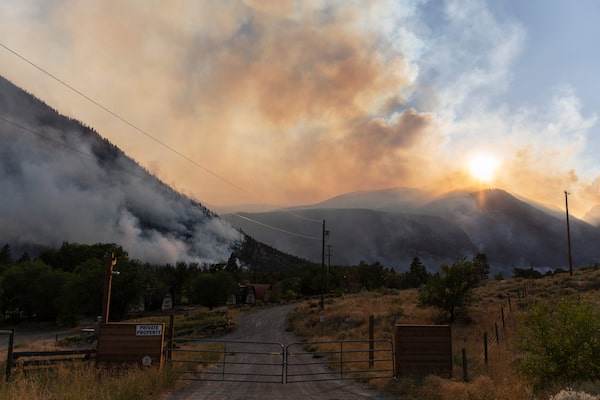
The Crater Creek Fire burns in the background of Keremeos Village on the same day that the Province of British Columbia declared a Provincial State of Emergency on August 18, 2023.PAIGE TAYLOR WHITE/AFP/Getty Images
1:05 p.m. ET
More than 19,000 out of Yellowknife as fire rages
A wildfire that forced the evacuation of most of Yellowknife remained about 15 kilometres from the capital of the Northwest Territories on Saturday after some help from the weather.
Wildfire information officer Mike Westwick said the area received about 4 millimetres of rain overnight and cooler, damper weather over the past few days allowed crews to get some good fire suppression work done.
“It’s going to buy us some time,” he said.
“We’re expecting to see west to northwest winds picking up by the afternoon pretty significantly. But the level of moisture in the air we do expect to put a damper on fire activity for the day.”
An evacuation order was issued Wednesday night for the city of 20,000 people and most residents complied with a departure deadline of noon on Friday.
Territorial officials said Friday night that 19,000 people were out and about 2,600 remained – 1,000 of them essential workers, including firefighters, emergency teams, utility workers and RCMP officers.
The last 39 hospital patients were flown out Friday night on a Canadian Forces plane and transported to British Columbia, David Maguire with the N.W.T. Health and Social Services Authority said in an e-mail.
He added that the hospital’s emergency department remained open.
Many evacuees have travelled to different areas of Alberta and up to 3,000 were being flown to Manitoba.
“The first flight with 15 people arrived early this morning,” the Manitoba government said in a statement Saturday. “Evacuees are being welcomed at the Winnipeg James Armstrong Richardson International Airport, transported to a reception centre and then to their hotel accommodations.”
There were 236 fires burning in the territory. In total, there have been 269 this year and they have burned more than 21,000 square kilometres – roughly four times the size of Prince Edward Island. No deaths have been reported.
Seven other N.W.T. communities were also under evacuation orders, forcing thousands more people out of their homes.
In Yellowknife, gas stations, stores and restaurants were all closed.
“Yellowknife feels like a ghost town at the moment, that’s for sure,” said Vincent Meslage, an essential worker still in the city.
He and a friend spent the better part of Friday driving people to the airport to get on evacuation flights.
“There were some people that were still stressed out, other people remained calm,” he said. “At the end of the day, most of the people are now gone.”
The weather forecast for the coming days didn’t look promising, said Westwick.
Temperatures were expected to rise Sunday and the wind could again pose a problem.
“The winds are going to be going the wrong way,” he said. “That’s going to push the fire east and the preliminary outlook after that are some additional tough days.”
– The Canadian Press
12:03 p.m. ET
Red Cross launches donation appeal for B.C. fire relief
The Canadian Red Cross has launched an appeal to help support people affected by the wildfires threatening communities and forcing thousands to evacuate their homes.
Donations to the British Columbia Fires Appeal will be used for immediate and ongoing relief, recovery and resilience efforts and could also be used for preparedness and risk reduction for future provincial disasters.
Canadians wishing to make a donation can do so online or by calling 1-800-418-1111.
– The Canadian Press
11:32 a.m. ET
More evacuations announced Friday for B.C. communities affected by wildfires
A series of evacuation orders were issued for residents of the southern Interior Shuswap area Friday night, threatened by the Lower East Adams Lake wildfire and the Bush Creek fire.
The Columbia Shuswap Regional District and area Indigenous nations issued evacuation orders for the Scotch Creek, Lee Creek, Celista, Magna Bay and Little River areas.
The Scotch Creek and Takana Bay bridges were closed and Scotch Creek residents were told to evacuate by boat.
The wildfire service says the lightning-triggered Lower East Adams fire on the east side of the lake has grown to 100 square kilometres, while the Bush Creek Fire to the west is now 33 square kilometres.
The Columbia Shuswap Regional District says Friday was an “unprecedented and profoundly challenging day” as it fought the most devastating fires in its history.
A fire in the Lytton area, meanwhile, has forced the evacuations of numerous properties, including the closure of the Trans-Canada Highway, while the Downton Creek fire in the Gun Lake area near Lillooet destroyed homes.
There are about 380 wildfires burning across the province, including 158 that are out of control and 16 wildfires of note that are highly visible or a threat to people or properties.
– The Canadian Press
7:45 a.m. ET
B.C. fires grow, destroy properties as Kelowna-area evacuations continue
A wildfire near Kelowna, B.C. has lead to evacuations and Premier David Eby declared a state of emergency Friday as hundreds more fires burn across the province.
The Globe and Mail
The wildfire battle in British Columbia continues today, focusing on the central Okanagan, where flames tore through West Kelowna suburbs and forced the evacuation of neighbouring Kelowna’s University of B.C. campus.
The fire fight in the Interior is the epicentre for a battle against hundreds of fires across B.C. that have prompted the declaration of a provincewide state of emergency and forced the evacuation of about 15,000 people.
Fire officials say the intense McDougall Creek wildfire has destroyed a significant number of properties in West Kelowna.
West Kelowna fire Chief Jason Brolund told a news conference yesterday the battle against the wildfire was like “100 years of firefighting.”
BC Wildfire Service spokesman Cliff Chapman says high winds and lightning that swept across the province in recent days ignited and kindled dangerous fires in areas beyond the central Okanagan.
He says a fire in the Lytton area forced the evacuations of numerous properties, including the closure of the Trans-Canada Highway, while the Downton Creek fire in the Gun Lake area near Lillooet destroyed homes.
– The Canadian Press
Justin Trudeau visits evacuees in Edmonton
Prime Minister Justin Trudeau met with N.W.T. residents at an evacuation centre in Edmonton on Friday and said he hopes the situation in Yellowknife doesn’t become “the worst-case scenario.”
He said he recognized the long journeys evacuees have made.
“Being there to help out each other and look out for each other is really the best of not just what Canada is, but particularly people who live in the North where the sense of community and looking out for each other is truly extraordinary,” Trudeau said.
– The Canadian Press
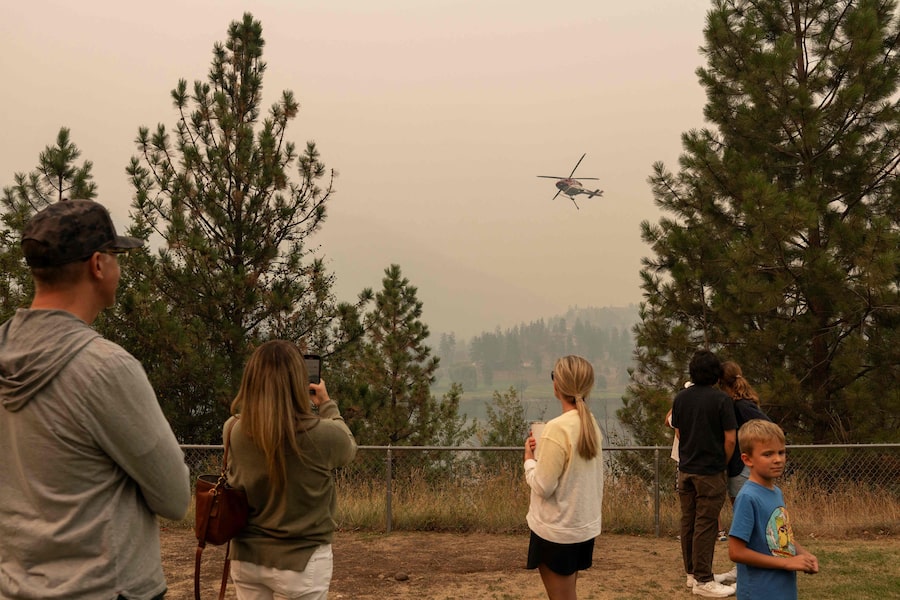
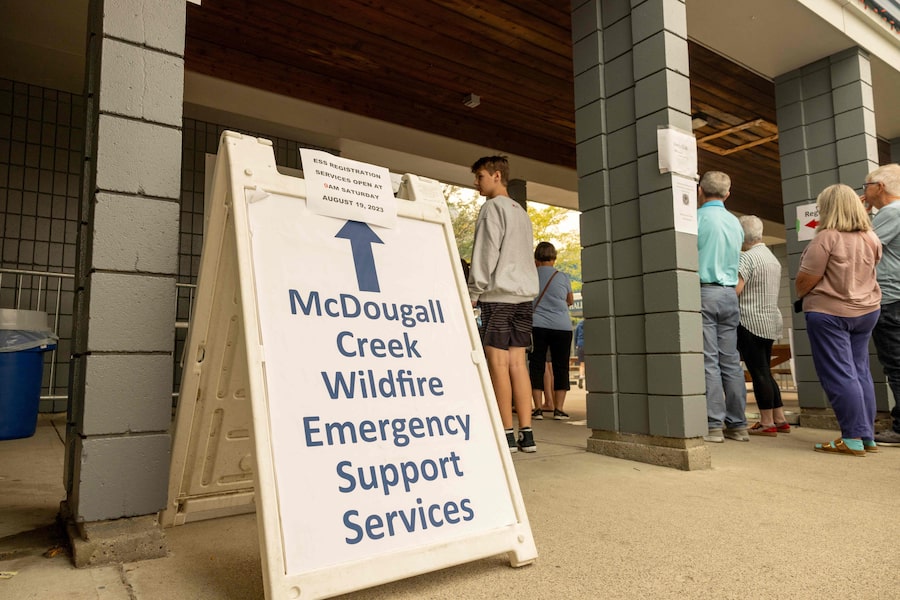
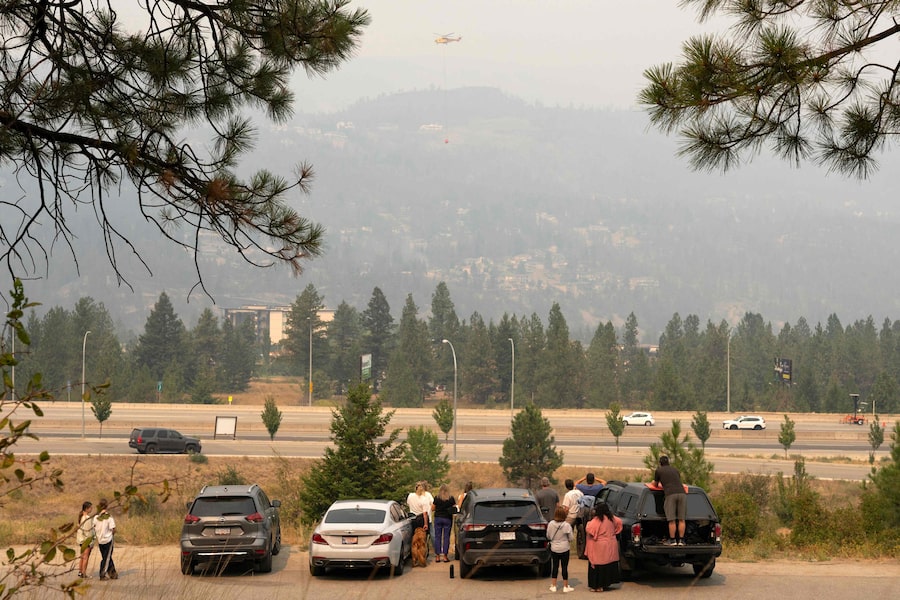
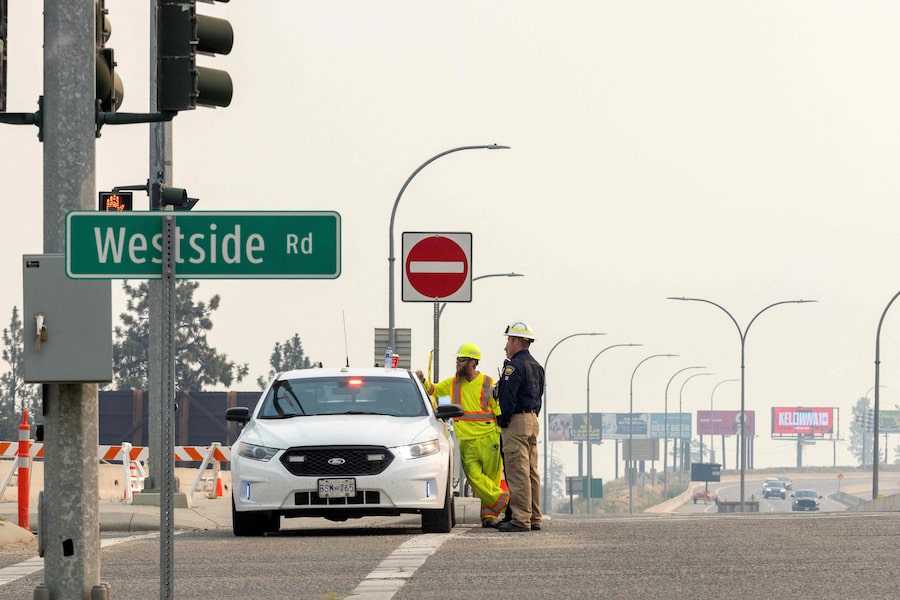
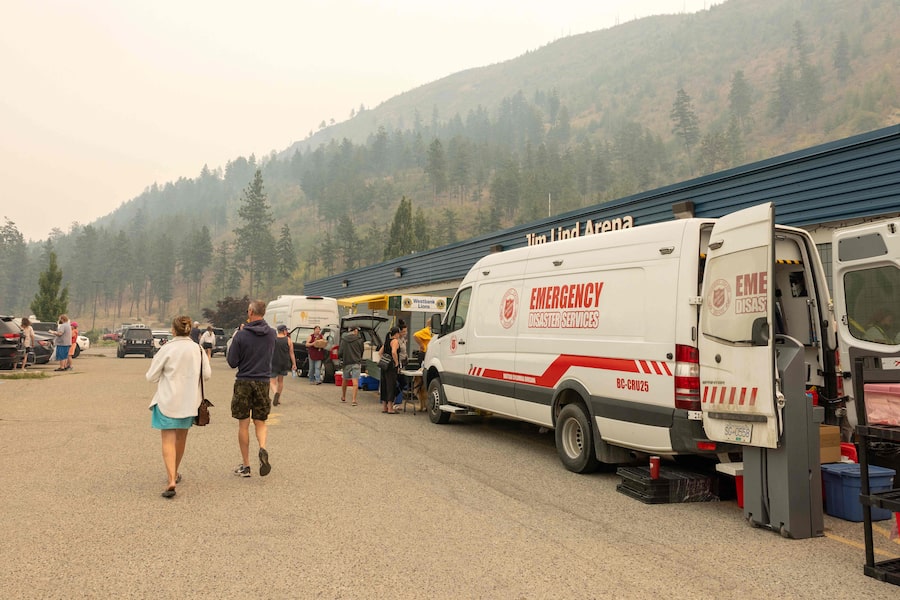
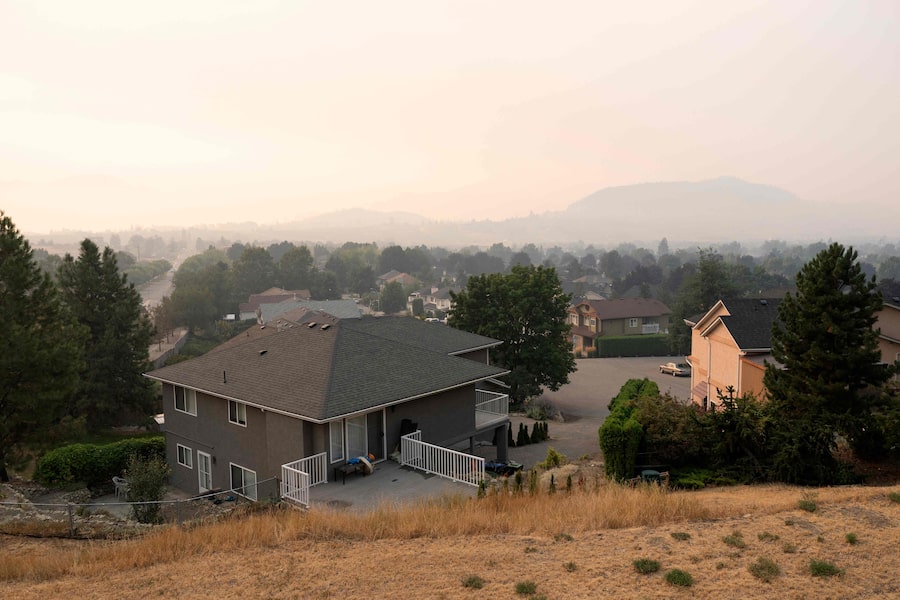
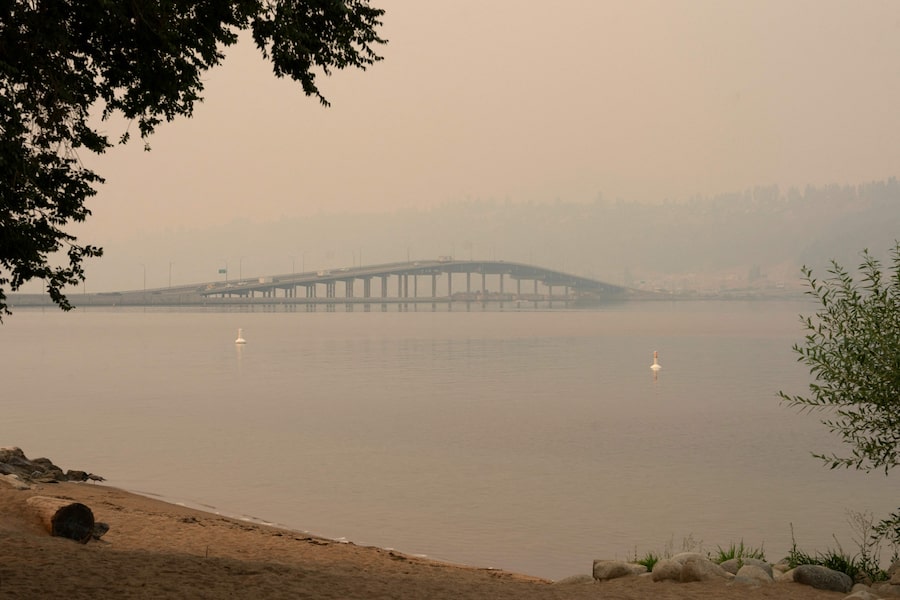
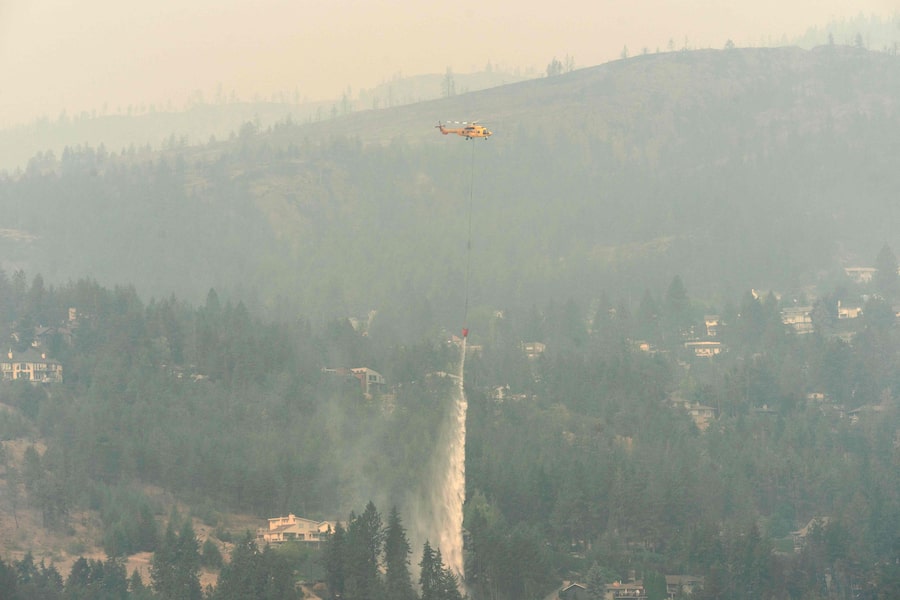
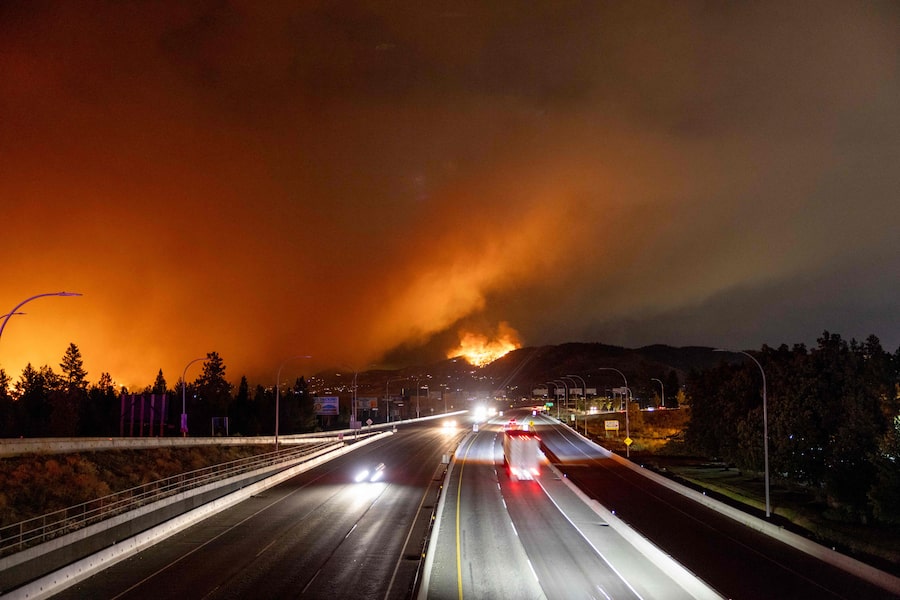
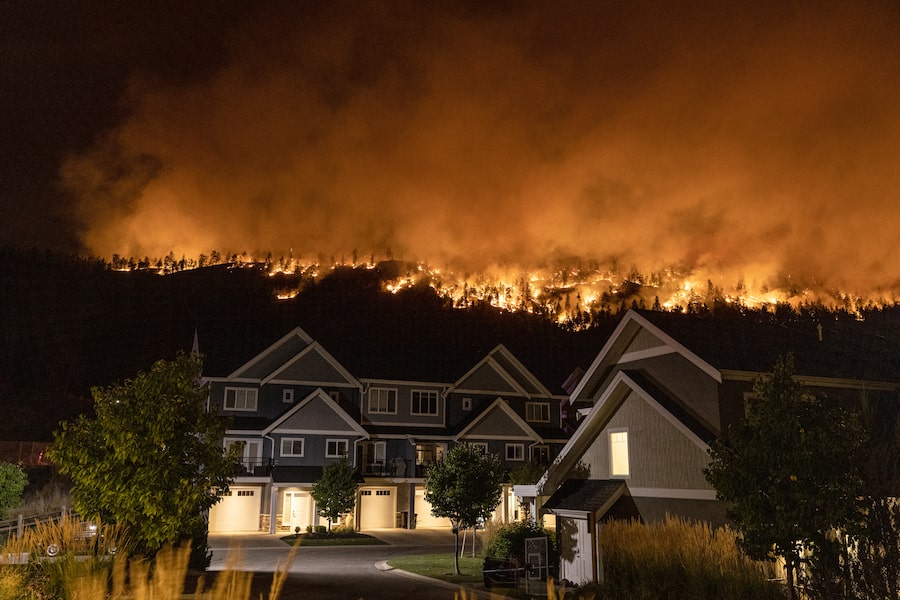
 Nancy Macdonald
Nancy Macdonald Carrie Tait
Carrie Tait Xiao Xu
Xiao Xu